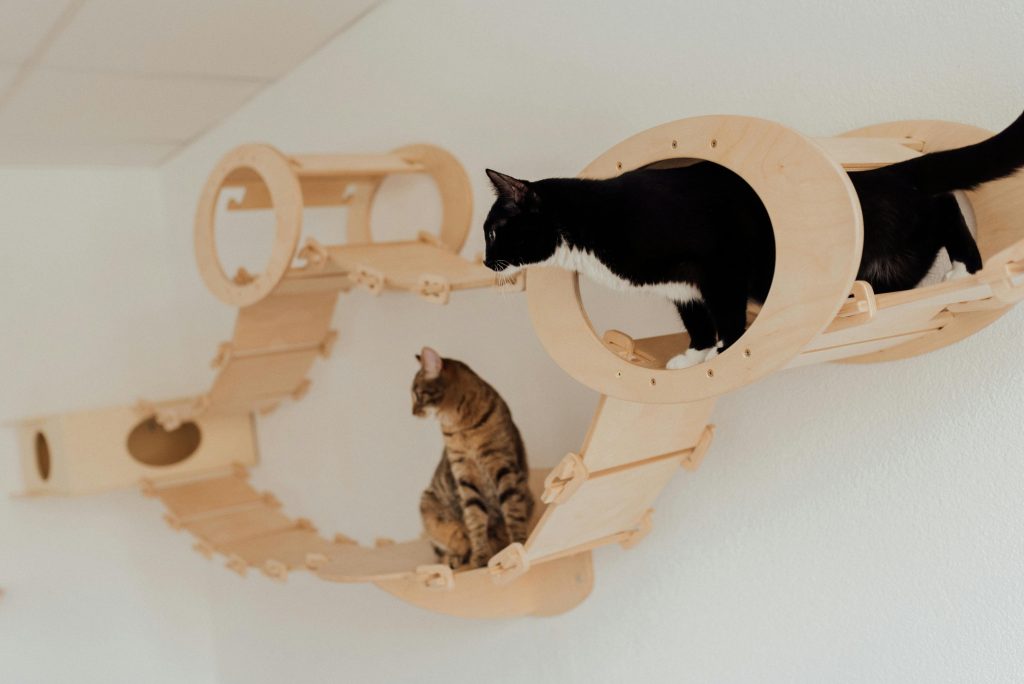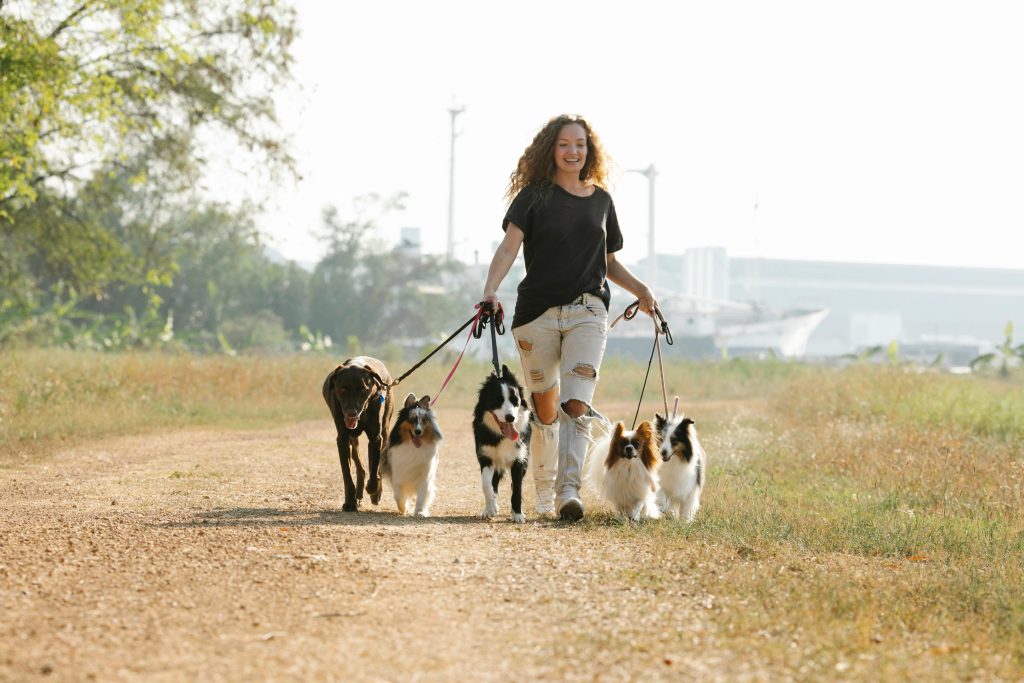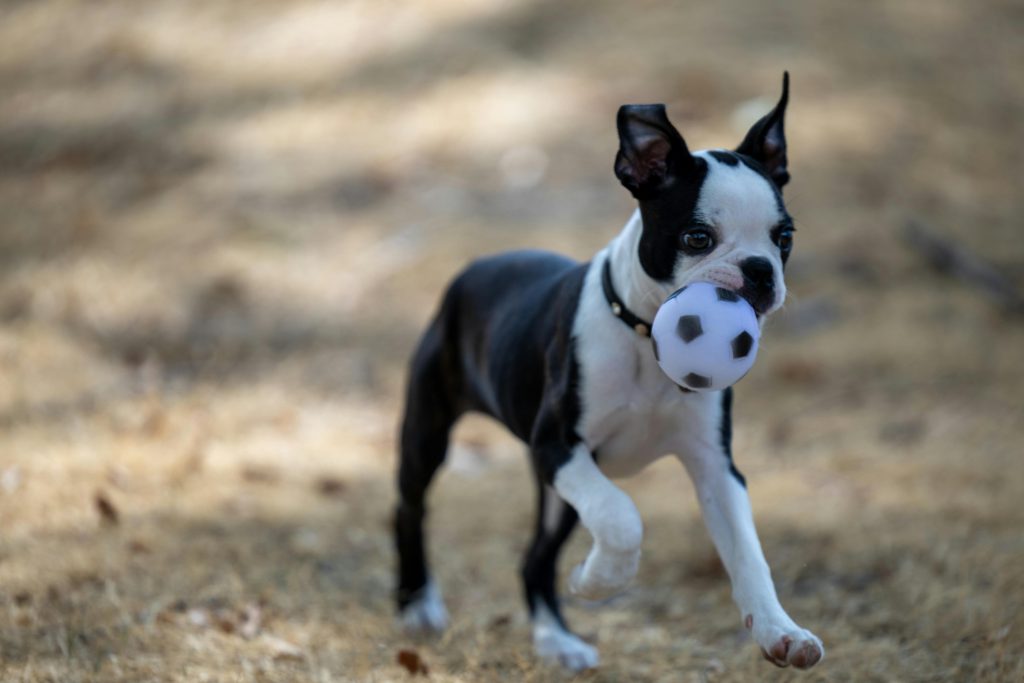
THE IMPORTANCE OF REGULAR EXERCISE FOR PETS
Exercise is essential for pets, just as it is for humans. Regular physical activity helps maintain a healthy weight, reduce the risk of illness, and stimulate pets mentally. Just like humans, animals who exercise tend to be happier and healthier with greater quality of life. Every pet needs exercise, and most don’t get anywhere near the amount they need. This is why there are so many overweight, bored companions with behaviour problems. Whether your pet is a dog that loves to run, a cat that enjoys a playful chase, or a rabbit that loves to hop around, providing adequate exercise is vital for their overall well-being. In this article, we will explore why exercise is important for pets and how to incorporate it into their daily routine.

BENEFITS OF EXERCISE
1. PHYSICAL HEALTH BENEFITS
The primary benefit of regular exercise for pets is improved physical health. Active pets are more likely to maintain a healthy weight and muscle tone, which reduces the risk of obesity-related health problems.
- Weight Management: Obesity is a common issue among pets, especially dogs and cats, which can lead to conditions such as diabetes, arthritis, and heart disease. Regular exercise helps burn calories and prevent excessive weight gain, keeping your pet at a healthy weight. Exercise can also help improve digestive health.
- Muscle Strength and Bone Health: Exercise helps build and maintain muscle mass and keeps joints flexible, reducing the risk of injuries and conditions like arthritis. Pets that don’t get enough exercise may become stiff and weak, especially as they age.
- Heart Health: Just like humans, pets need cardiovascular exercise to keep their hearts strong. Regular movement promotes good circulation, reduces stress on the heart, and may help to manage high blood pressure.
2. MENTAL STIMULATION AND ENVIRONMENTAL WELL-BEING
Exercise isn’t just about physical health – it also plays a key role in your pet’s mental and emotional well-being. Pets that are mentally and physically stimulated are less likely to develop behavioural issues or become anxious and depressed.
- Boredom Prevention: Pets, especially dogs, can become bored and frustrated if they don’t get enough exercise. Boredom can lead to destructive behaviour, such as chewing on furniture, digging holes, or excessive barking. Providing physical activities helps prevent these issues.
- Stress and Anxiety Relief: Regular exercise can help alleviate anxiety and stress in pets. Active pets are less likely to display signs of separation anxiety, nervousness, or aggression. Exercise also helps burn off excess energy, which can contribute to calmer behaviour.
- Bonding Time: Physical activities, such as walks or playtime, provide an opportunity for you to bond with your pet. Whether you’re playing tug-of-war with your dog or engaging in interactive games with your cat, spending time together strengthens your relationship and deepens the emotional connection.
3. SOCIALIZATION AND BEHAVIOUR IMPROVEMENT
Exercise is an excellent way to socialize pets, especially dogs, with other animals and people. Regular walks, trips to the dog park, or playdates with other pets help improve your pet’s social skills and reduce fear-based behaviours. Please note that there is more to socialization than just this.
- Positive Socialization: Dogs that get regular exposure to other dogs and people are less likely to become fearful or aggressive. Socializing them through controlled exercises and activities ensures that they’re more comfortable in various environments and around other pets.
- Improved Behaviour: Pets that don’t get enough exercise may exhibit undesirable behaviours like aggression or hyperactivity. Regular physical activity provides an outlet for their energy, leading to improved behaviour at home.
- Exercise builds confidence: Exercise helps shy or fearful dogs build confidence by allowing them to explore their environment, engage their senses, and develop problem-solving skills. Activities like agility, scent work, or structured walks provide positive experiences that reinforce independence and reduce anxiety.

Also, read more on how parrot owners fail their pets.
Most people do not meet their pets’ exercise or enrichment needs and then wonder why their dog is “acting out”. Here is a powerful video that illustrates this. For me, it is heartbreaking because this breed especially suffers a lot with the lack of the right exercise and being forced to live in town yards, when they should be living on farms.
HOW MUCH EXERCISE DOES YOUR PET NEED?
Different pets have different exercise requirements based on their breed, age, and health. It’s important to tailor your pet’s exercise routine to their specific needs.
- Dogs: Most dogs need at least 30 minutes to an hour of exercise per day, depending on their breed and energy level. High-energy breeds, like Border Collies and Labrador Retrievers, may require more exercise, while low-energy dogs, such as Bulldogs or Shih Tzus, may need less. Regular walks, jogs, or playtime in the yard are great options for dogs.
Walking, for most dogs, will not be enough to optimally work their hearts. Here’s a good rule of thumb: Dogs should get a minimum of 20 minutes of sustained heart-thumping exercise a minimum of three times a week.
- Cats: While cats are generally more independent than dogs, they still benefit from exercise. Interactive toys, like feather wands, encourage cats to play and exercise. Some cats also enjoy climbing or exploring, so providing vertical spaces like cat trees can promote physical activity.
- Small Pets: Rabbits, guinea pigs, and hamsters also require regular exercise. A safe, enclosed area where they can run, jump, or play helps maintain their physical health. Rabbits, for example, need space to hop around freely to stay fit. A hamster wheel poses certain risks and should not be the only exercise for a hamster.
- Parrots: Parrots are highly active animals, designed to fly long distances daily. When kept as pets, their ability to fly is severely restricted. To keep them healthy, they need plenty of physical and mental exercise, such as climbing, foraging, and supervised flight time. That is non-negotiable for responsible pet guardians. Providing a variety of perches, toys (daily change), and interactive activities helps mimic their natural movement and keeps them fit and engaged.
WAYS TO EXERCISE
Pets can stay active through various exercises like walking, running, digging, flying, climbing, and swimming. Remember that not all dogs are good swimmers, despite popular belief. Activities that improve strength, flexibility, and balance, along with stretching and massage, help keep them fit and relaxed.
PRECAUTIONS FOR EXERCISE
Different breeds, ages, and health conditions affect exercise tolerance. There is something like too much exercise and there is a dark side to for example, playing fetch.
AVOID CHASING THE BALL TOO MUCH
Have you ever wondered why many dogs will bring the ball over and over again? The answer is in the hormones released. Chasing and catching a ball tap into the dog’s predatory sequence, and causes the body to release adrenaline. Chasing a ball endlessly can have serious health risks. The repetitive action releases adrenaline and cortisol, which during prolonged release can lead to heart strain, anxiety, and difficulty settling. Physically, sudden stops, twists, and jumps put stress on muscles and joints, increasing the risk of injuries, especially to the shoulders. Over time, this can cause lasting damage.
Safer Alternatives:
- Limit fetch and play on safe surfaces.
- Warm up your dog before high-impact activities.
- Encourage calmer games like scent work or “find the ball” to engage their mind without overloading their body.
- Store fetch toys out of sight if your dog is obsessive.
LASER PLAY
This popular toy can make your pet highly frustrated, and I never support it as a way to exercise them. Both cats and dogs instinctively chase laser beams simply because they move, and movement triggers the prey drive. When a laser dot stimulates your cat or dog’s predatory systems, they can’t NOT chase it, yet they can never “catch” it. So the question becomes, is it a good idea to trigger your cat or dog’s prey drive using an object they have no chance of catching? No, it is not! Laser-chasing may seem fun, but veterinary behaviorists found that like dogs, cats can also develop behavior disorders as a result of chasing, but never catching, those little red dots.

SIGNS THAT YOUR PET MAY BE OVEREXERTED
Over-exercising your pet can lead to exhaustion, injuries, and even long-term health issues. Here are signs to watch for:
1. Excessive Panting & Drooling
2. Lagging Behind or Stopping
3. Limping or Stiffness
4. Disorientation or Weakness
5. Dark Red or Pale Gums
6. Vomiting or Diarrhea
7. Reluctance to Exercise
8. Excessive Thirst
9. Rapid or Labored Breathing
10. Collapse or Unconsciousness
This is an emergency! If your pet collapses, seek veterinary help immediately.
What to Do:
- Stop exercise immediately if you notice any of these signs.
- Offer water and move them to a cool, shaded area.
- Let them rest and monitor their recovery.
- If symptoms persist, contact your vet.
EXERCISE QUADRANTS (LEVELS OF AROUSAL)
I agree with SpiritDog Training that there is such a thing as too much high-arousal exercise.
They share that activities that tend to physically wear dogs out the fastest are also the ones that create the highest excitement levels. Fetching balls. Playing frisbee. Racing around at the dog park. Chasing water from the garden hose. Running next to a bike. All of these are physical exercises, but they also create intense arousal states. And if you put your dog into high-arousal states repeatedly you better know how to train around this, too. The dog may start to crave these arousal states (as programmed in their DNA).
But at the same time, no impulse control training happened. So now we have a dog who knows the fun of adrenaline and who seeks it, without having been taught to listen and regulate when in a state of high excitement. This dog will start to show other problems. They might get frustrated to the point of redirecting when they cannot access fun immediately. They might be vocalizing or unable to settle, and then the trainer/behaviourist get messages that say “My dog just cannot be normal in public”.
If your dog gets to enjoy a high-arousal activity every time they leave the house, they will start to expect (and eventually demand) a high-arousal activity every time. Your dog needs a balance of high-arousal and low-arousal activities. Furthermore, the more high-arousal activities your dog has, the more you have to balance these with impulse control training. It’s not fair to make our dogs crazy without teaching them the skills to un-crazy.
“Exercise” can have four quadrants:
- Low-arousal, not physically demanding (sniff walks)
- Low-arousal, physically demanding (hiking)
- High-arousal, not physically demanding (excited waiting while another dog works)
- High-arousal, physically demanding (fetching)
Make sure you are aware of which type of exercise you are providing for your dog, and try to reach a balance that works for your dog. Know your pet’s limits! Keep sessions appropriate to their needs. A well-balanced routine keeps your dog happy, healthy, and injury-free!
TIPS FOR INCORPORATING EXERCISE INTO YOUR PET’S ROUTINE
- Set a Schedule: Just like humans, pets thrive on routine. Set aside regular times each day for exercise. For dogs, daily walks or play sessions are important. For cats and other small pets, interactive play or exercise time should also be scheduled regularly.
- Mix It Up: Keep your pet engaged by varying their exercise routine. Dogs can enjoy different activities, such as fetching a ball, running, or swimming. Cats might enjoy chasing toys or climbing, while small pets can benefit from running in an exercise ball or exploring new spaces.
- Use Positive Reinforcement: Reward your pet with treats, praise, or extra playtime when they engage in exercise. Positive reinforcement helps encourage good behaviour and makes exercise fun for your pet.
- Monitor Your Pet’s Health: Pay attention to your pet’s health and adjust their exercise routine as needed. Older pets or those with health conditions may require lower-impact activities, such as shorter walks or slower-paced play. Always consult your veterinarian if you have concerns about your pet’s exercise regimen.

Please remember that enrichment goes beyond physical exercise—it’s about engaging your pet’s mind and fulfilling their natural instincts. While exercise keeps them fit, enrichment prevents boredom, stress, and behavioural issues. Activities like puzzle feeders, scent games, training sessions, and interactive toys stimulate their brain, providing the mental challenge they need. Without proper enrichment, even the most well-exercised pet can become anxious or destructive. Mental and physical stimulation go hand in hand for a truly happy and well-balanced animal.
Regular exercise is crucial for keeping your pet healthy, happy, and well-adjusted. Whether it’s taking your dog for a daily walk, playing interactive games with your cat, or letting your rabbit hop around in a safe space, exercise promotes both physical and mental well-being. Tailor your pet’s exercise routine to their individual needs and preferences, and be mindful of any signs of overexertion. By incorporating regular physical activity into your pet’s routine, you’ll help them lead a longer, healthier, and more fulfilling life.
Join us again next week when we learn about the pets of our lives.